The guitar is a truly amazing instrument. But the parts of a guitar can be confusing.
There are more than you might have first thought. And if you’re new to the guitar it can difficult learning which each part is and what they do.
Which can be a hindrance. You’ll hear lots of terms and phrases that you don’t understand or know what they refer to when you’re starting out. So learning the names of the parts of the guitar and what they do is important.
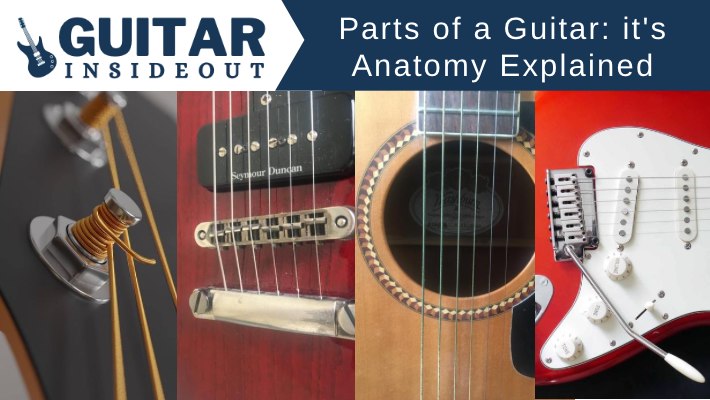
So let’s take a look at every part of the electric guitar and acoustic guitar to help you get familiar with the guitars anatomy. Trust me, it isn’t as difficult as it sounds and you’ll soon know a string tree from a tuning peg!
Parts of a Guitar
For quick reference this is a list of all the parts of both acoustic and electric guitars.
- Body
- Neck
- Strings
- Headstock
- Fretboard
- Tuning Pegs/Machine Heads
- Tuning Posts
- Nut
- Heel
- Frets
- Fret Inlays
- String Trees
- Pickups
- Bridge
- Saddles
- Pickguard
- Pickup Selector Switch
- Tone and Volume Controls
- Input Jack
- Tremolo Arm
- Strap Buttons
- Truss Rod
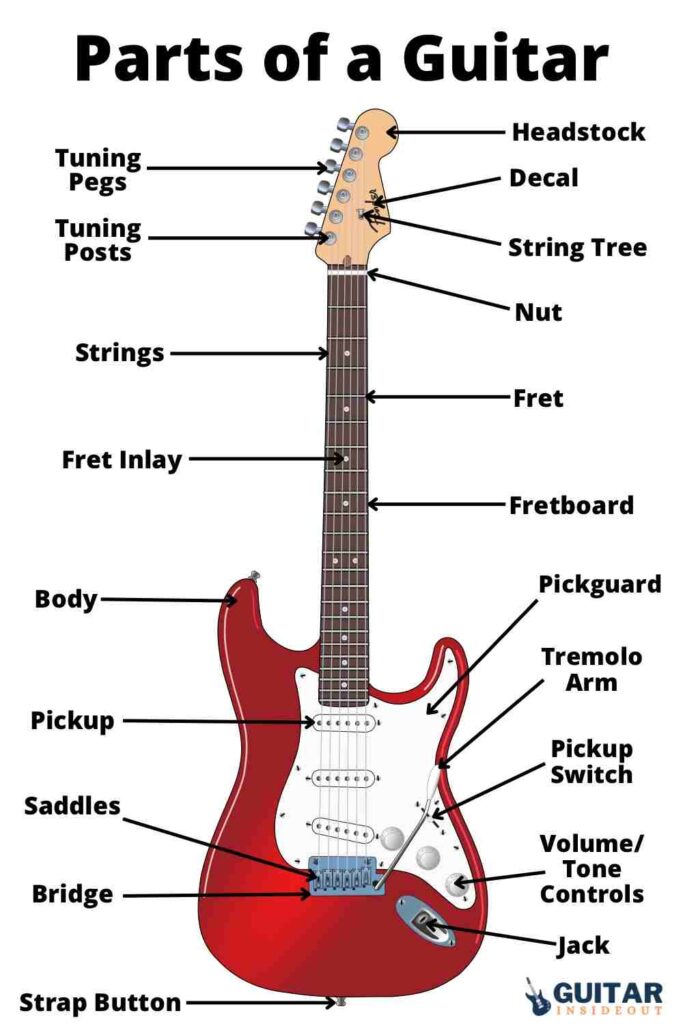
Below we’ll go through each part and explain what it is, where you find it on the guitar and what it’s function is.
Electric Guitar Parts
Let’s take a look at each individual part of the guitar and help explain exactly what they do and what they are for. We’ll also have pictures for every part to help you identify them.
Body
What is it: the body of a guitar is the main, large part of the guitar that rests against your body when you play. The hand you strum or pick with will do so over the body of the guitar. Guitar bodies are made from many different types of wood and come in a huge variety of shapes and sizes. These woods and shapes can affect the tone and resonance of the sound.
Where is it found: it’s impossible to miss it – the large part of the guitar that either has the sound hole in or electronics, depending on the type of the guitar.
What does it do: An acoustic guitar has a soundhole in the body that broadcasts the vibration of the strings at the bridge into the air. Whereas an electric guitar will have pickups mounted to the body that take the vibrations of the strings and send them to the amplifier. The body of the acoustic guitar has more of an impact on the sound but it still plays a role in the sound from an electric guitar too.
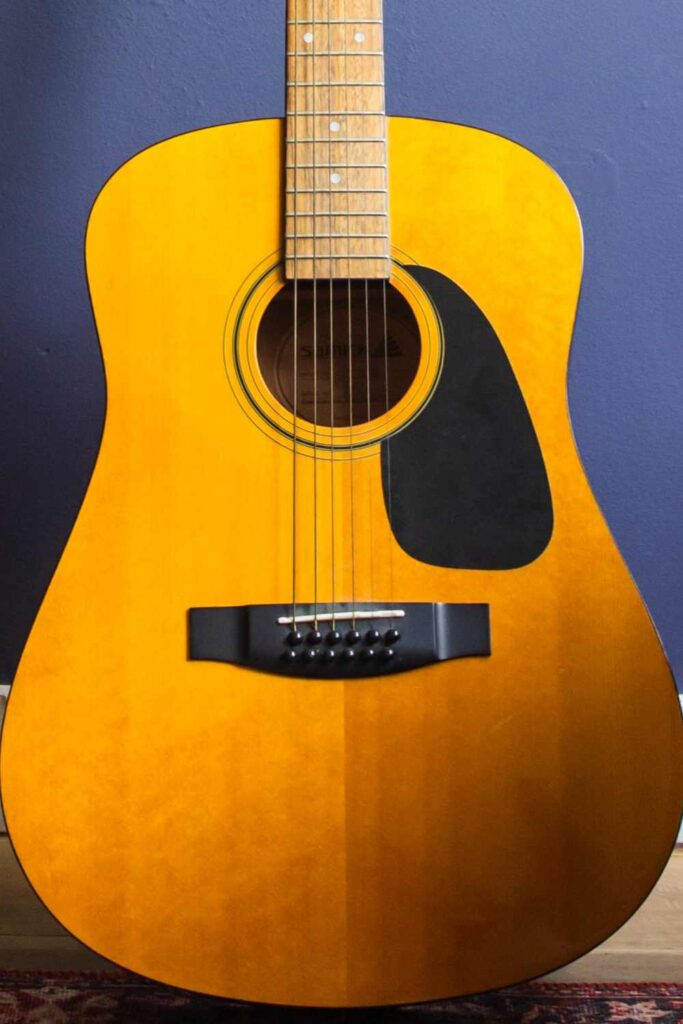
Neck
What is it: the neck is the long, thin part of the guitar that is attached to the body. It’s made from wood and is what you hold and place your fingers on in order to hold the strings down. Guitar necks are attached to the body in two ways: 1. Bolted on, whereby the neck is a separate piece entirely and uses screw and bolts to attach it. 2. Neck through where the body and neck are one piece. They come in a variety of different shapes that
Where is it found: much like the body you can’t really miss it! It’s the long, thinner part of the guitar that sticks out from the body and the strings run along.
What does it do: it acts as a base for the fretboard, which is where the frets are located and where you place your fingers to make up chords. It’s also what you hold to stabilize the guitar.
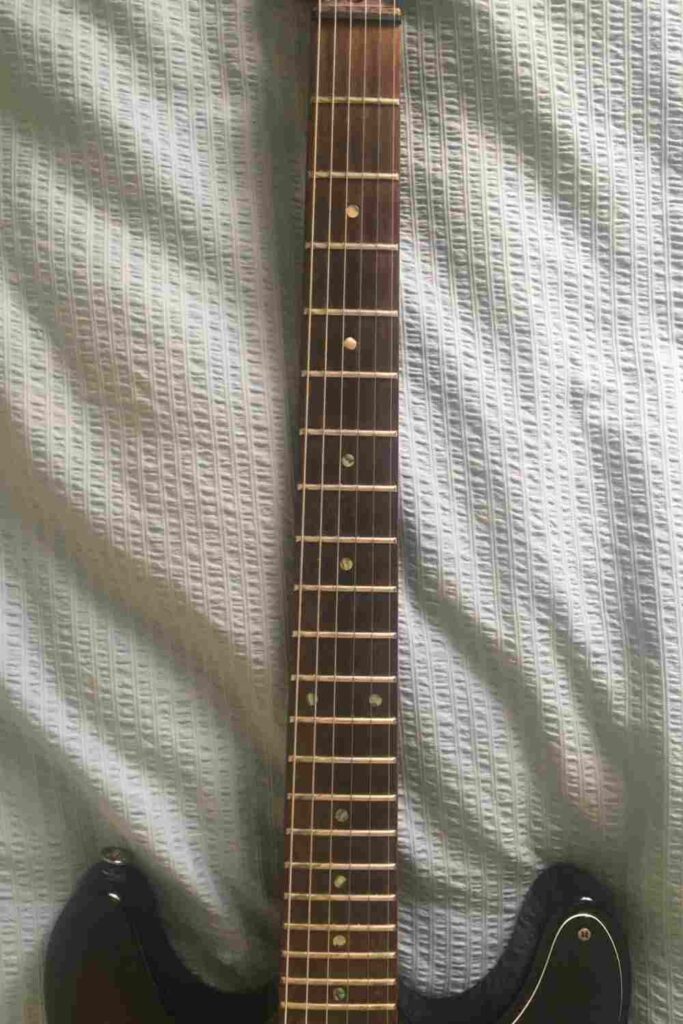
Strings
What are they: the strings are what you pick or strum. They are made from a variety of metals, mainly nickel or steel and come in many different gauges. Acoustic guitar strings are usually thicker than electric guitar strings.
Where are they found: the strings are found running along the neck and fretboard of the guitar.
What do they do: guitar strings vibrate when they are plucked or strum and those vibrations create the sound you hear. In the case of acoustic guitars the vibrations are broadcast via the soundhole. In electric guitars the vibrations are picked up by the pickups and sent to the amplifier.
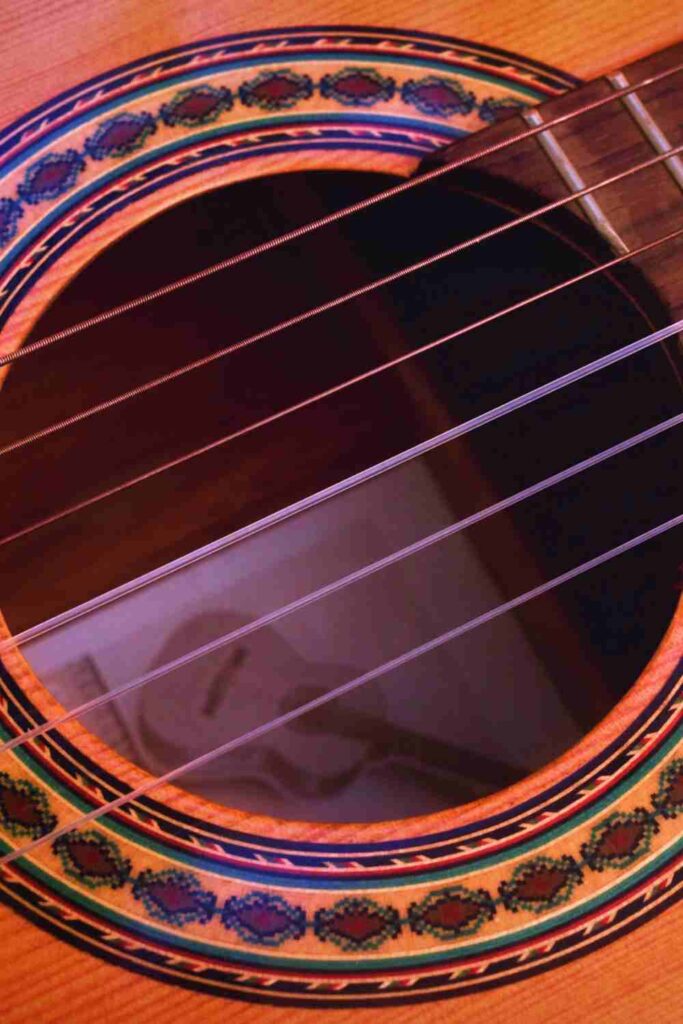
Headstock
What is it: the headstock, or just “head”, is where the tuning pegs and posts are held. It’s where you tune the guitar strings. Often the brand decal/logo is found on the headstock as well.
Where is it found: it’s found at the uppermost point of the guitar at the end of the neck.
What does it do: it’s main job is to hold the strings in place. It does that by housing the tuning pegs/machine heads that you turn to tune each string.
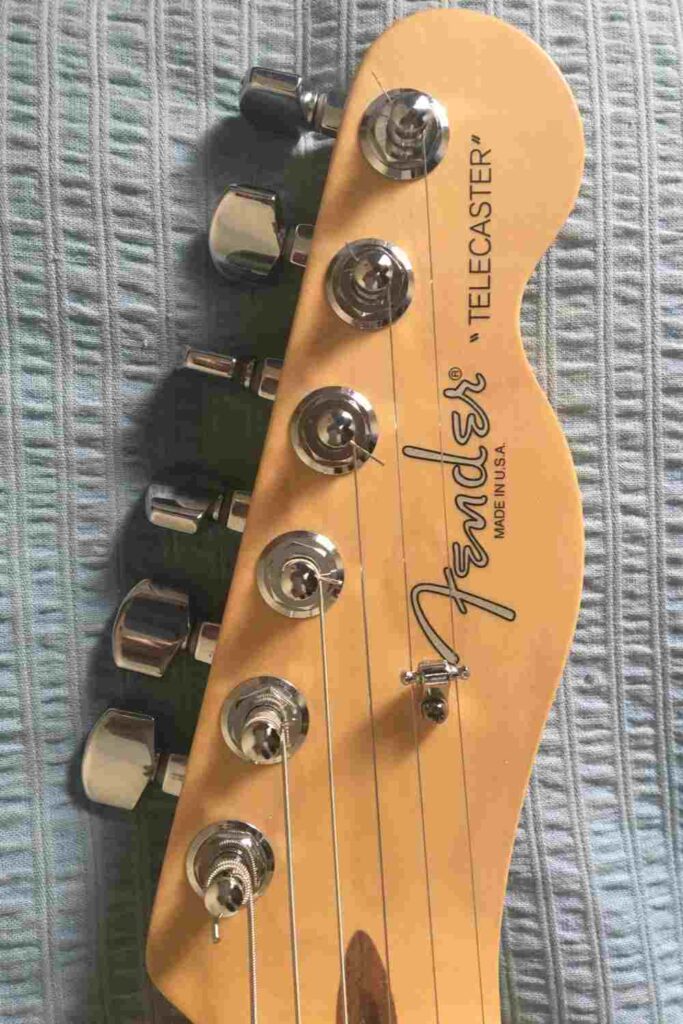
For even further information see our guide to guitar headstock types
Fretboard
What is it: the fretboard (or fingerboard) is the piece of wood attached to the front of neck. It is made from various different types of wood like maple or rosewood. The strings of the guitar run along it from the bridge to the tuners and allow you to press down the strings to make chords or single notes.
Where is it found: the fretboard is laminated or attached to the front of the neck. When looking at the guitar from the front it is what you see along the front of the neck.
What does it do: you use the fretboard by holding down the strings between frets. This changes the pitch of the note when you pluck or strum the string or strings.

Tuning Pegs/Machine Heads
What are they: tuning pegs or machine heads (they’re often referred to by both names, also tuning keys) are the gears or knobs that are used to tune the guitar. They are commonly made from metal and come in quite a few different types.
Where are they found: tuning pegs are found on the headstock of the guitar.
What do they do: tuning pegs change the tension of the strings when turned. You use them to tune your guitar by turning the gear or knob either way to reduce or increase the tension which lowers or increase the pitch. They also hold the strings in place so they don’t slip or move around.

Tuning Posts
What are they: tuning posts are the small posts that the strings on a guitar are sound around.
Where are they found: on the headstock below the tuning pegs.
What do they do: tuning posts are used to wrap the strings around to hold them in place. They can then be adjusted by the tuning pegs to increase or decrease tension.
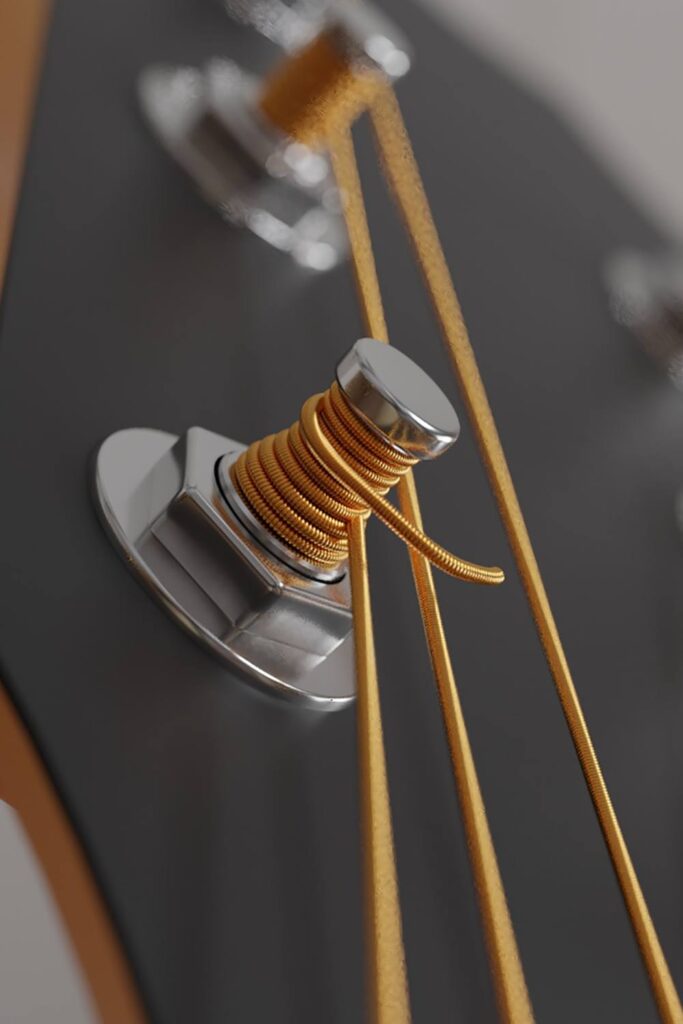
Heel/Neck Joint
What is it: it’s the join where the neck meets the body. If the neck is bolted on then you find screws and a plate holding the neck at the heel, whereas a glued heel will have a block of wood glued to support it. If it’s a neck through guitar then it won’t have a heel as the body and neck are one whole piece.
Where is it found: the neck joint is found at the back of the guitar where the neck joins the body. Think of it as the bottom of the neck or the top of the body.
What does it do: the heel acts as a support to the guitar. The point where the neck meets the body is weakest spot on a guitar and so the heel helps to stabilize this area and make it stronger and less vulnerable to breaks.
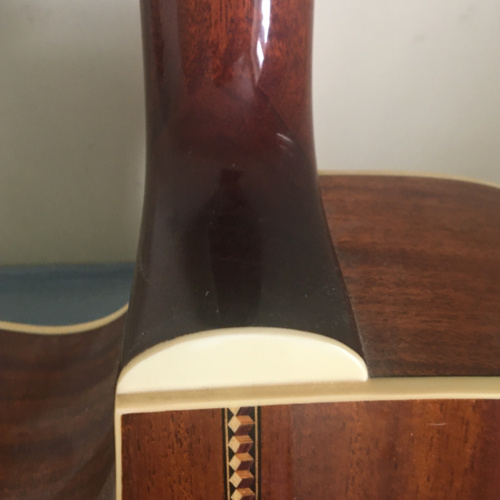
For more information see our guide to the heel of the guitar
Nut
What is it: the nut is a piece of plastic, bone, graphite etc. that has grooves in it that the strings of the guitar rest in. There are many different types of nuts that do different things.
Where is it found: the nut is found just below the head of the guitar where the neck meets it. Follow your strings from the bridge or body up the neck. You’ll be able to see it is a block that looks a bit like a fret but is usually made from plastic or bone.
What does it do: the nut does a few things: it determines the space of the strings across the neck. It plays a role in the action of the guitar i.e. how high they are from the fretboard. And it sets the length that the strings vibrate at. It also is essential setting the intonation correctly. Overall for something unassuming it’s very important.
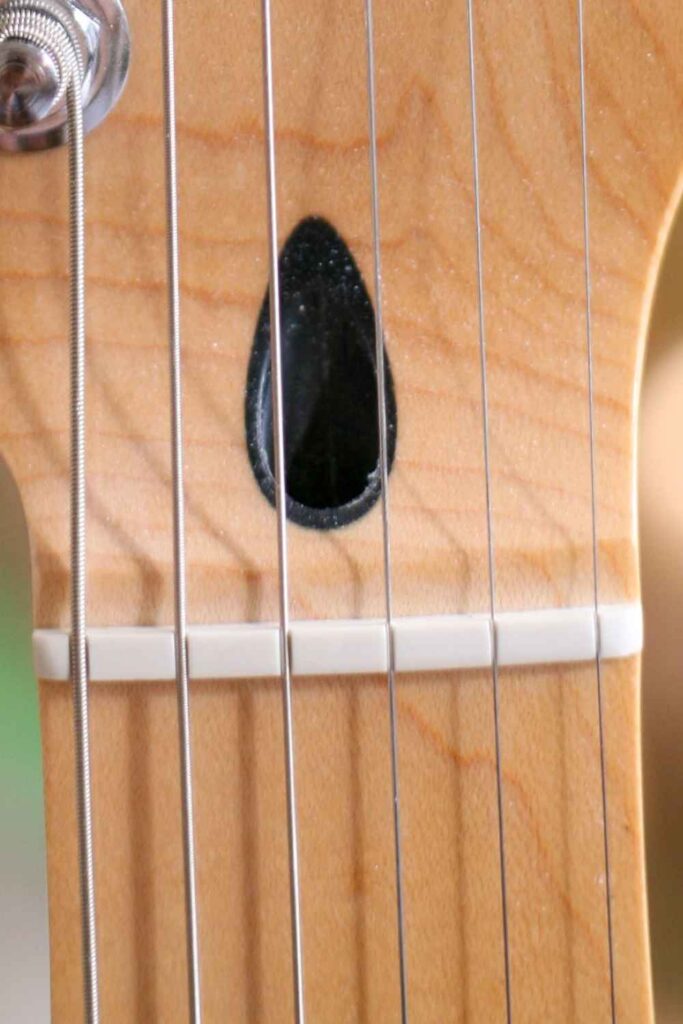
For more see our complete guide to the guitar nut
Frets
What are they: frets are small strips of wire, usually metal, that are placed vertically on the fretboard. Slightly confusingly it’s the space in between the frets where you place your fingers that are mostly to referred to as frets. Whereas the strip of metal is actually the fret.
Where are they found: all along the fretboard.
What do they do: frets divide the fretboard up into intervals and allow the player to hold the strings down at these intervals and in turn this changes the length the string vibrates at and gives different notes.

Fret Inlays/Position Markers
What are they: fret inlays (or position markers) are markers along the fretboard. They are usually dots but also come as other shapes or designs depending on the guitar and manufacturer. Fenders are almost always dots, Gibson uses trapezoids etc. They can also be made from different materials but mother of pearl is very common.
Where are they found: on the fretboard at the 3rd, 5th, 7th, 9th, 12th, 15th, 17th, 19th and 21st frets.
What do they do: fret inlays purpose is to show you which fret is which. There’s a more in-depth, theory based reason but for simplicity sake it’s easier to think of them as a visual reference for where your hand is on the fretboard.
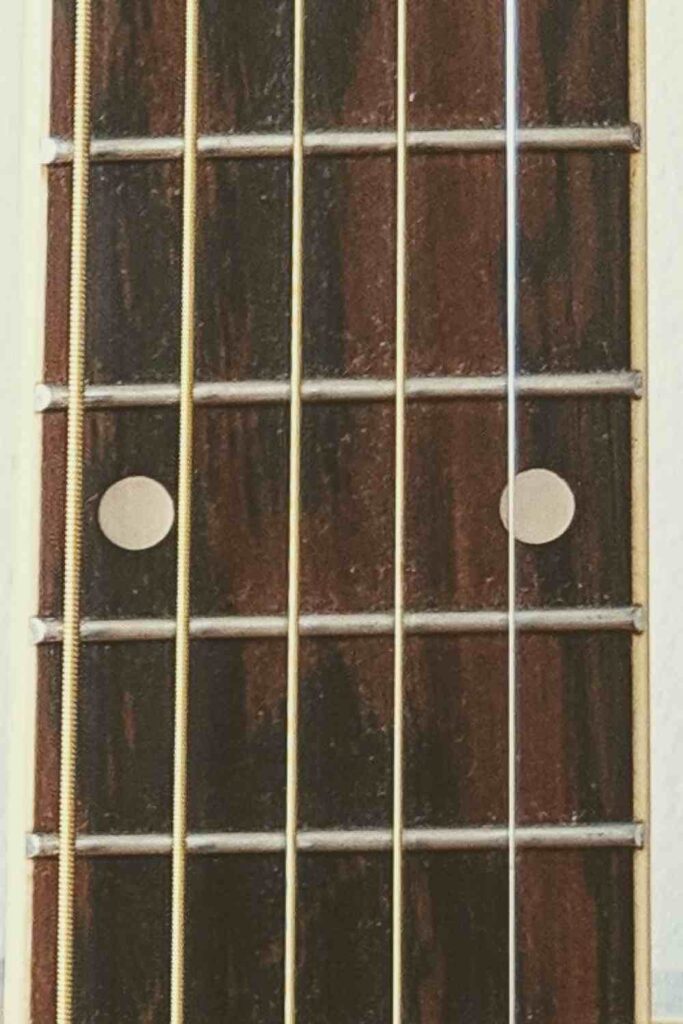
String Trees
What are they: string trees are little metal hooks or widgets on the headstock that make up part of the positioning and tuning of the guitar strings.
Where are they found: they are located on the headstock of the guitar below the tuning posts.
What do they do: they create the correct angle when the string passes over the nut to the tuners. This keeps them from coming unseated from the nut slots and maintaining the right tension.
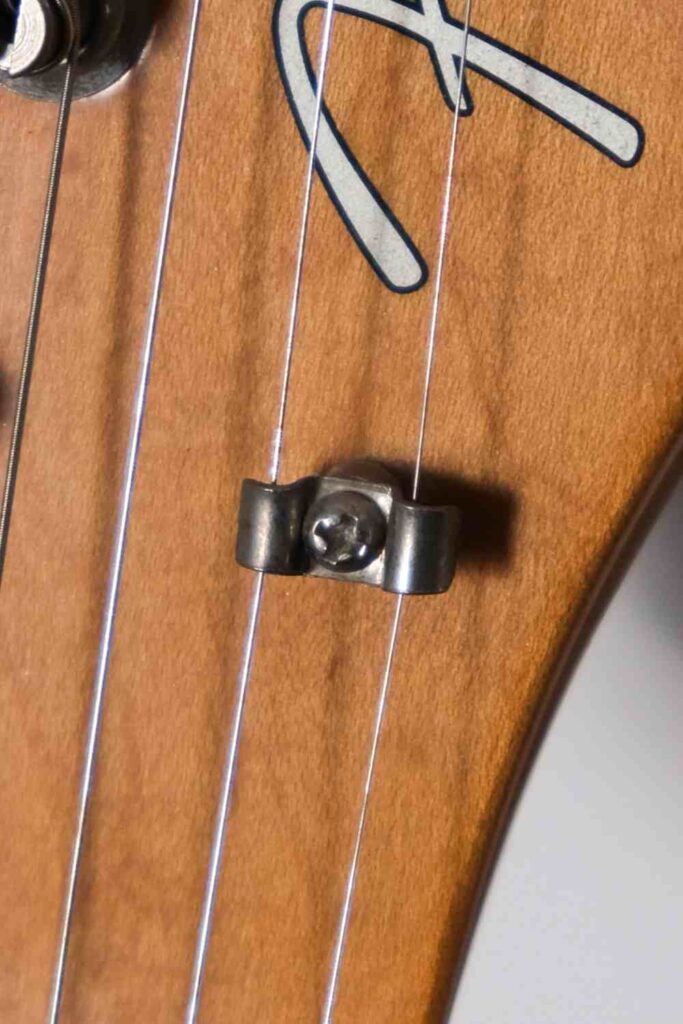
Pickups
What are they: the pickups are the devices that translate the strumming or picking of the guitar strings into the sound you hear through an amplifier. They come in different types – single coil, P90’s and humbuckers – and are essential to the sound of electric guitars.
Where are they found: pickups are found underneath the strings near to the bridge of the guitar. You tend to strum over the pickups.
What do they do: pickups “pick up” the vibrations of the strings. They then convert those vibrations into electrical signal which is carried to an amplifier where the sound is amplified through a speaker.
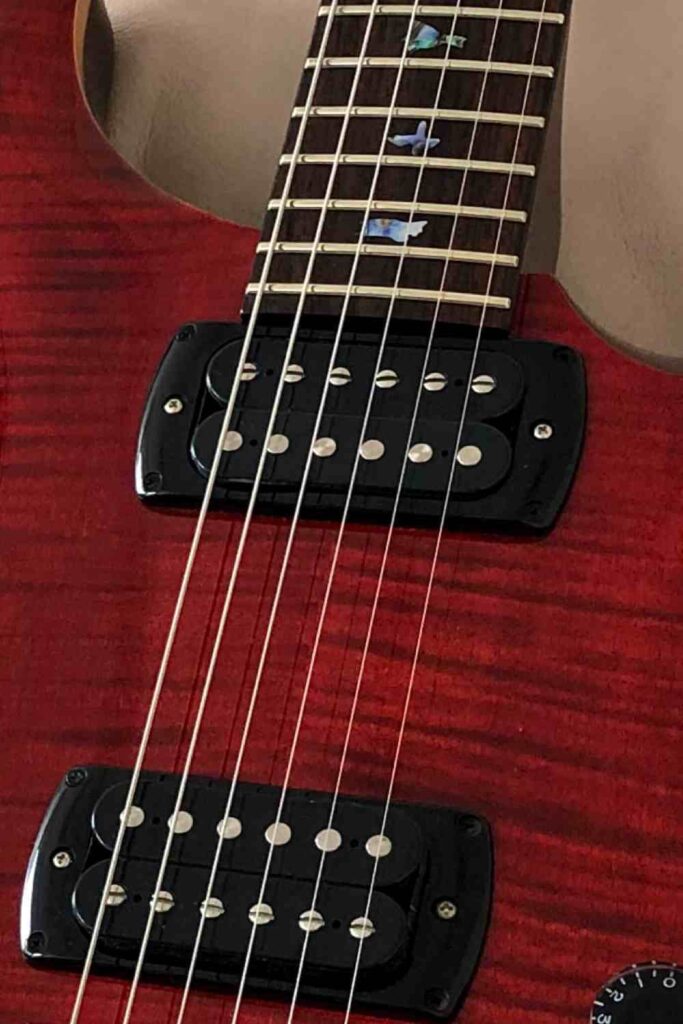
Bridge
What is it: the bridge is a piece of material – usually wood or metal – that supports the strings of the guitar.
Where is it found: the bridge is attached to the guitar body. Looking at a guitar standing up it is the center but lower area of the body.
What does it do: the bridge of a guitar holds the strings in place on the body of the guitar. It directs the strings over the pickups or soundhole, depending if it’s an electric or acoustic guitar. It also plays a role in the action of the guitar – that is the height of the strings from the fretboard – and also for adjusting strings intonation.
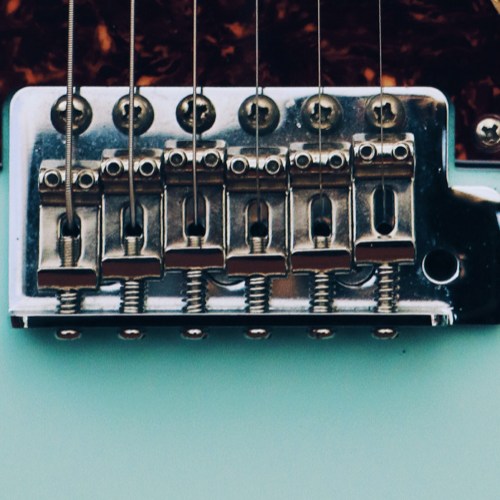
For more information see our guide to what a guitar bridge is
Saddles
What are they: the saddles, or bridge saddles, are small “saddle” like pieces of material – wood on acoustic and metal on electric – that the strings sit in. On electric guitars saddles have controls via screws to adjust the length and height of the string.
Where are they found: they are either part of or right next to the bridge.
What do they do: the saddles play a role in setting the intonation and action of the strings. Saddles can be moved backwards and forwards and this will change the intonation of the strings. The saddles moving will also lower or raise the action of the strings.

Pickguard
What is it: the pickguard or scratchplate is a piece of plastic or other material that is attached to the body of the guitar.
Where is it found: pickguards are always found on the body of the guitar but vary in shape and size depending on the type or manufacturer of guitar.
What does it do: it stops the finish of the guitar getting scratched or marked by your no nails as you are strumming or picking. It’s not as necessary when playing with a plectrum as it shouldn’t come into contact with that part of the body. Quite often pickguards are used for decoration as much as protection.
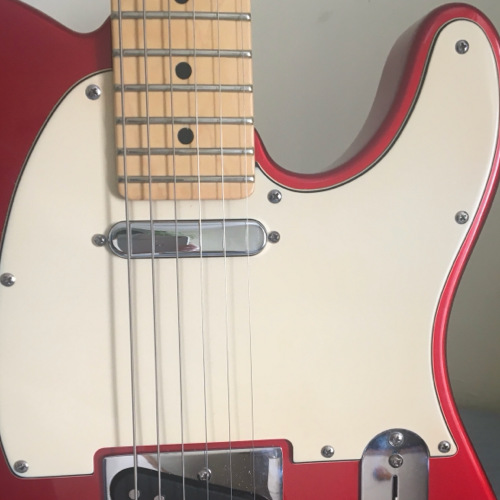
For further information take a look at our guide to what a guitar pickguard is
Pickup Selector Switch
What is it: a switch for switching between the pickups on your guitar (if you have more than one pickups)
Where is it found: depending on the guitar the pickup switch is found in various locations on the body. Most commonly it is below the bridge and tone/volume controls but can be virtually anywhere on the body.
What does it do: it allows for the player to switch between different combinations of pickups. These different combinations produce differing tones. For example the switch may let you engage just the bridge pickup, both the bridge and neck pickup together or just the neck pickup.
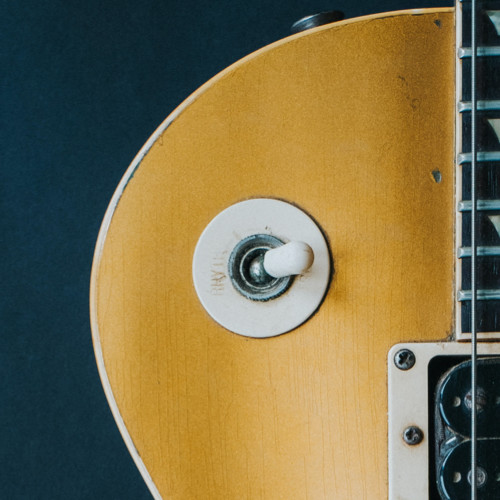
Tone & Volume Controls
What are they: the knobs on the guitar that control the volume level and tone of the guitar.
Where are they found: on the body of the guitar usually below the bridge and pickups.
What do they do: the volume control allows you to raise or lower the volume of the output of your guitar. The tone control affects the higher frequencies of the sound your guitar produces. So if you turn the tone control down it should make the sound less shrill and harsh or “trebly”.
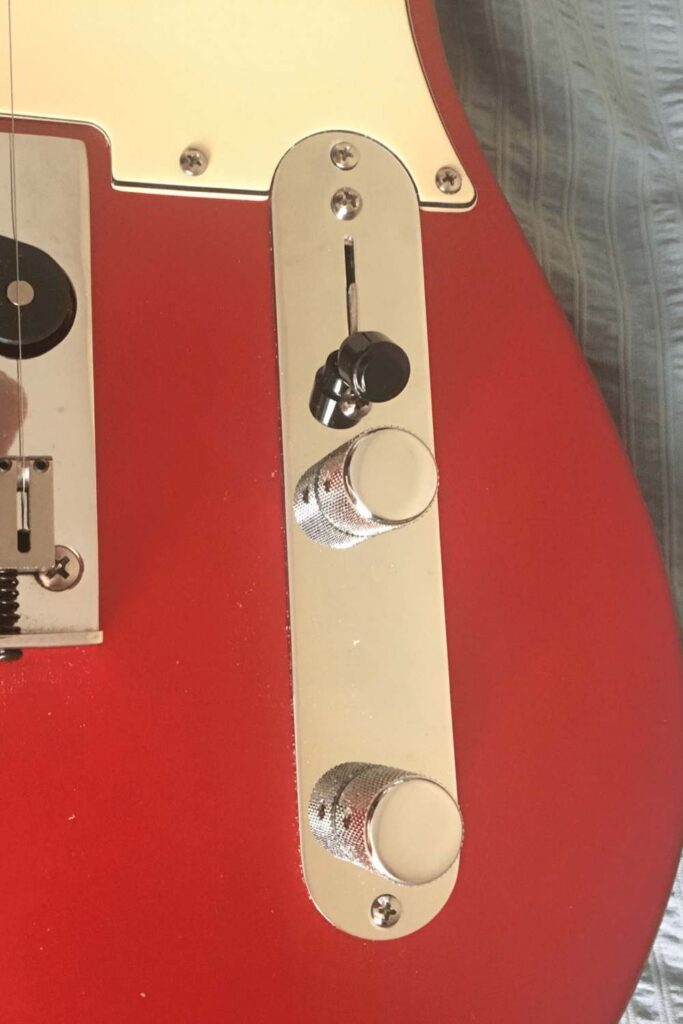
For even more see our guide to what the guitar knobs do
Output Jack
What is it: the output jack is a unit attached to the guitar where you plug in the cable that runs to the amplifier.
Where is it found: depending on the guitar it will be found on the side or the lower body.
What does it do: the jack passes the electric signal created by the pickups to the cable.
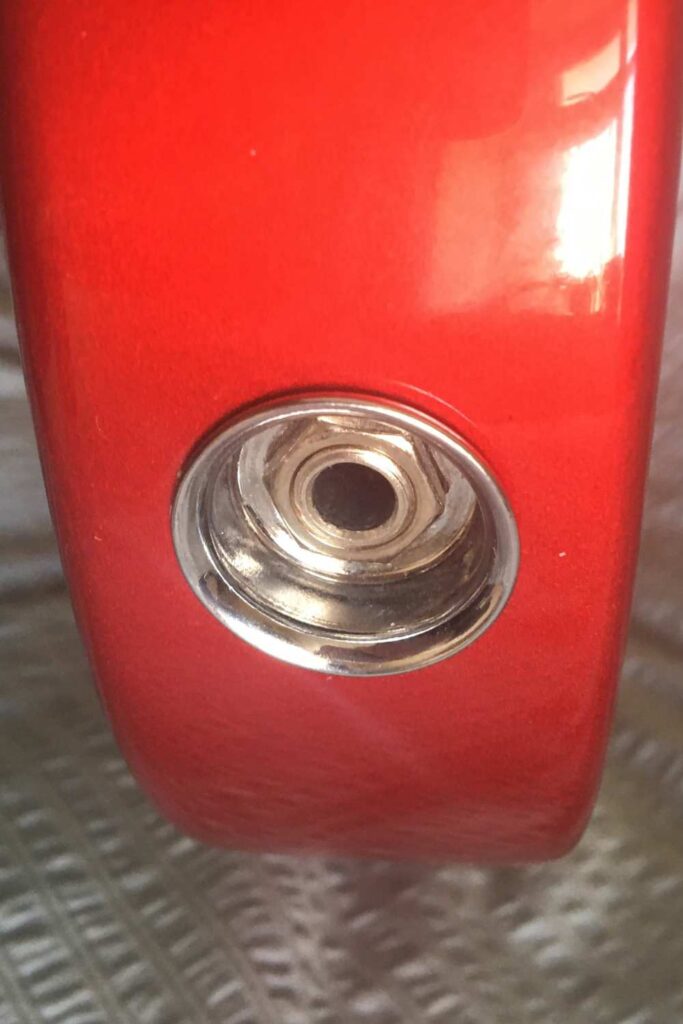
Tremolo Arm/Whammy Bar
What is it: the tremolo arm or “whammy bar” (it’s also known as the vibrato system, but that incorporates all the different parts not just the arm/bar) is
Where is it found: the tremolo arm is located on the bridge of the guitar. It is screwed in and then projects from there.
What does it do: if you put pressure on the tremolo arm it loosens the tension on the strings which flattens the pitch. If you push the arm away from the body of the guitar you get the opposite effect – the pitch sharpens.
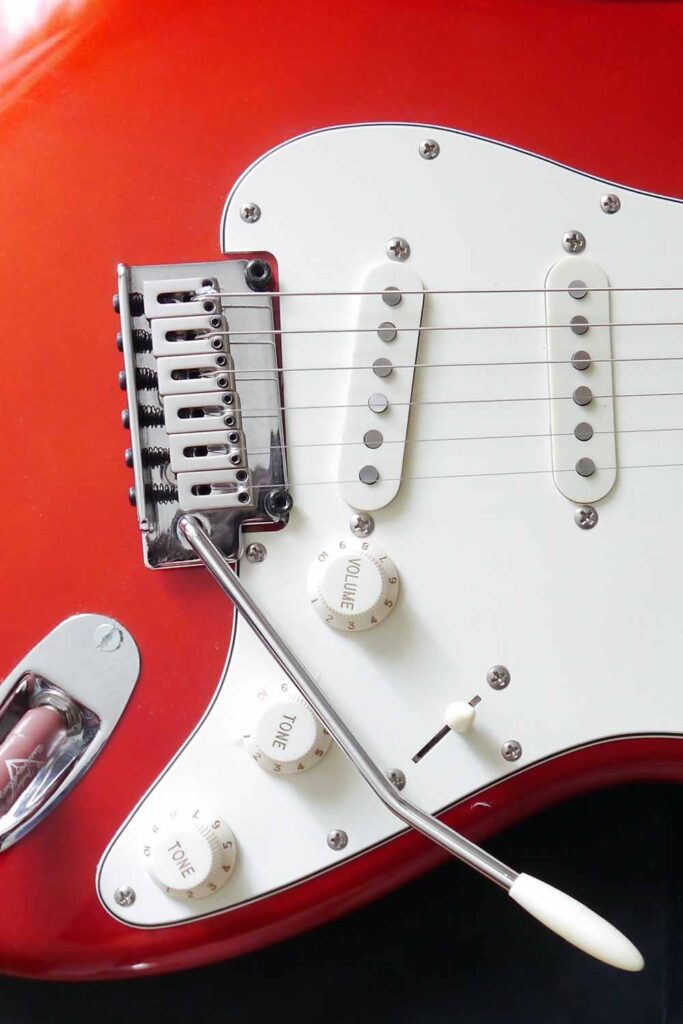
Strap Buttons/ Strap Locks
What are they: the strap button is a small button that is screwed into the side of the guitar. A strap lock is a device used instead of a button that secures the strap in place and makes it impossible for the guitar to fall or the strap to come off.
Where are they found: strap buttons tend to be located in one or two locations on a guitar. Most commonly they are at the bottom of electric guitars and on one of the “horns”.
What do they do: strap buttons are simple in that they allow you to attach a strap to them. Strap locks ensure the strap secure to the guitar and can’t detach or fall from it. The strap lock is used to guarantee the guitar won’t drop and break.
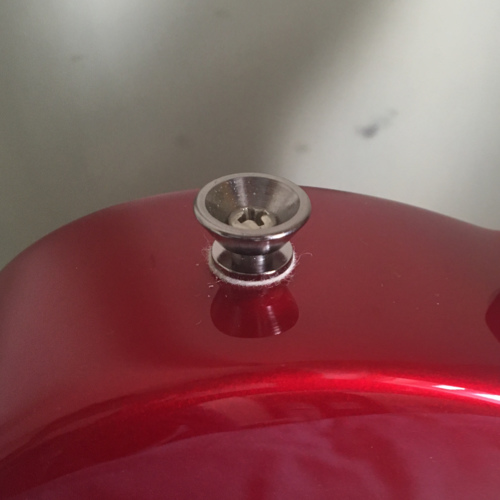
Truss Rod
What is it: a truss rod is a steel bar that runs through the inside of the guitar neck. It can be turned and adjusted.
Where is it found: the truss rod runs from the head of the guitar, at the nut, all the way through the inside of the neck. You cannot see it as it is within the neck.
What does it do: the truss rod keeps the neck stabilized against the tension of the strings. The truss rod affects the relief of the neck and can be adjusted to change that relief to fit a players style or with issues regarding the neck – fret buzz, a bowed neck etc.

Acoustic Guitar Parts
The acoustic and electric guitar share many of the same parts: the obvious ones like strings, neck, body etc. but also tuning pegs, string trees, saddles and more. So we won’t go over those again.
But the acoustic guitar does have some elements that an electric doesn’t.
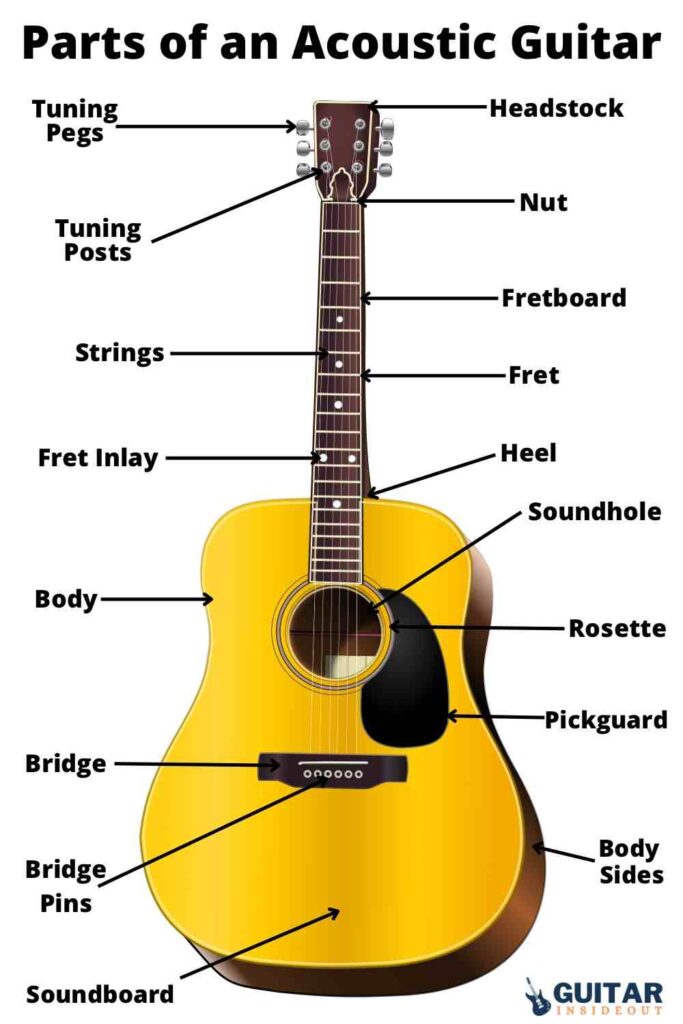
Sound Hole
What is it: the sound hole is an opening within the body of the guitar.
Where is it found: it is usually at the front of the guitar beneath the strings.
What does it do: they amplify the sound the strings vibrating make. You strum or pluck the strings, they vibrate and create a sound and then the sound hole amplifies and makes it louder.
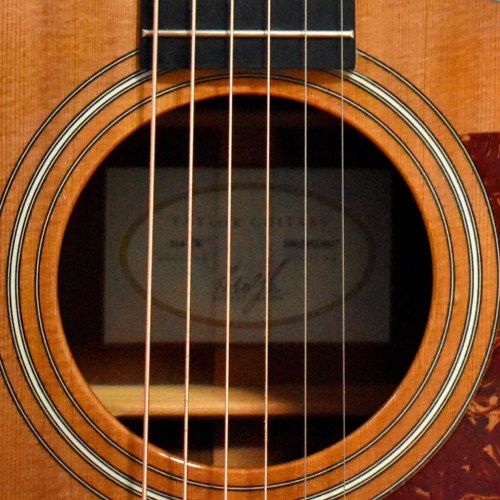
Soundboard
What is it: the soundboard is a thin sheet of wood on the top of an acoustic guitar.
Where is it found: the front of the guitar body as you look at it is the soundboard.
What does it do: it affects the tone of the sound produced. Different materials affect the tone in different ways.
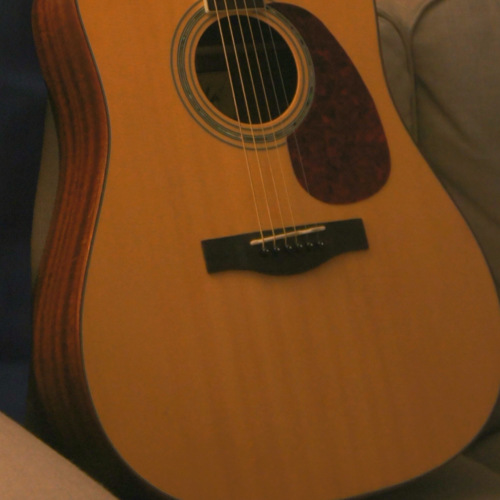
Bridge Pins
What is it: bridge pins are small pins that come in various sizes and made from different materials.
Where is it found: bridge pins are located at the bridge.
What does it do: the bridge pins are used to secure the string in place at the bridge of an acoustic guitar.
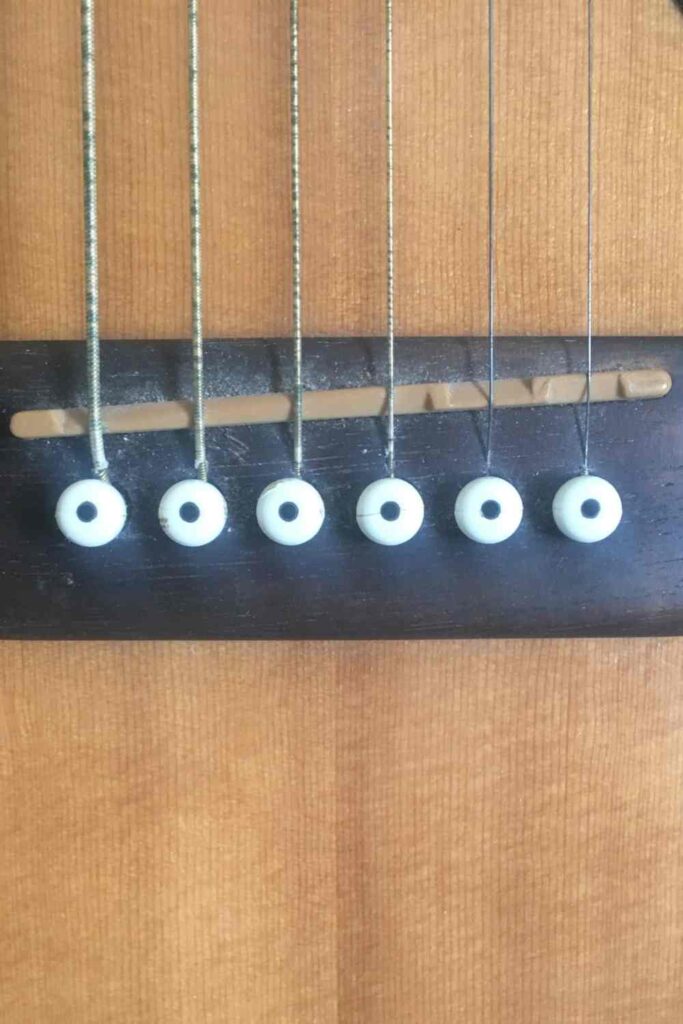
Rosette
What is it: the rosette is a ring of decoration around the soundhole.
Where is it found: around the soundhole of an acoustic guitar.
What does it do: a rosette is mainly for decoration but also acts as reinforcement and protects the wood from cracking.
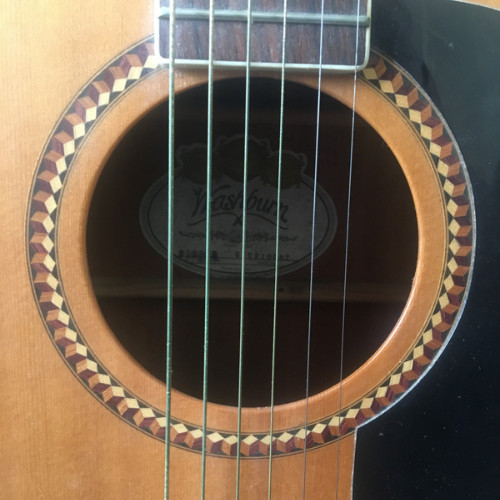
Summary
Hopefully you now have a better understanding of the parts of a guitar and feel confident about what they do and why. Taking the time to learn them and the anatomy of a guitar will ultimately help you in the long run with maintenance, diagnosing problems and generally playing your guitar.